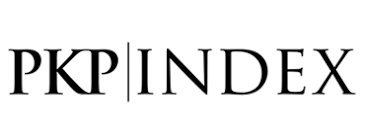Pengaruh Cuci Hidung dengan NaCl 0,9% Terhadap Ekspresi Gen IL-1Beta dan TNF-Alpha Mukosa Hidung Penderita Rinosinusitis Kronis di RSUP Dr M Djamil Padang
Abstract
Latar belakang: Rinosinusitis kronis merupakan penyakit inflamasi pada mukosa hidung dan sinus paranasal yang menghasilkan beberapa sitokin proinflamasi, yaitu; IFN-γ, TGF-β1, IL-1β, IL-3, IL-6, IL-8, TNF-α dan IL-5. Sitokin IL-1β, TNF-α dan IL-6 mempunyai peranan yang besar dalam menimbulkan gejala hidung berair. Pada beberapa literatur penggunaan cuci hidung dengan NaCl 0,9% pada rinosinusitis kronis dapat mengurangi sekresi musin, menurunkan produksi postnasal drip, mempercepat perbaikan mukosa dan mengurangi gejala sumbatan hidung. Tujuan: Mengetahui pengaruh cuci hidung dengan NaCl 0,9% terhadap kadar sitokin IL-1β dan TNF-α pada mukosa hidung dan sinus paranasal pada penderita rinosinusitis kronis. Metode: Studi eksperimental dengan teknik pre dan post test design untuk mengetahui pengaruh pemberian cuci hidung dengan NaCl 0,9% terhadap ekspresi gen IL-1β dan TNF-α mukosa hidung penderita rinosinusitis kronis. Hasil: Jumlah log copynumber gen IL-1β sebelum dan sesudah cuci hidung didapatkan 8,07 ± 0,95 dan 8,20 ± 0,93 (p>0,05). Jumlah log copynumber gen TNF-α sebelum dan sesudah cuci hidung dengan NaCl 0,9% adalah 8,83 ± 3,83 dan 6,72 ± 2,55 (p>0,05). Ratio gen IL-1β awal dan akhir pada kelompok perlakuan dan kontrol adalah 52,51 ± 1,21 dan 61,99 ± 1,13. Ratio gen TNF-α awal dan akhir pada kelompok perlakuan dan kontrol adalah 9,63 ± 2,21 dan 334,4 ± 1,31. Kesimpulan: Pada penelitian ini tidak dijumpai penurunan yang bermakna pada ekspresi absolut (jumlah log copynumber) gen IL-1β dan gen TNF-α mukosa hidung penderita rinosinusitis kronis setelah diberikan terapi medikamentosa disertai cuci hidung dengan NaCl 0,9%.
Keywords
Full Text:
PDFReferences
Guilemany JM, Alobid I, Mullol J. Controversies in the treatment chronic rhinosinusitis Expert Rev. Resp. Med. 2010; 4(4): 463–77
Fokkens WJ, Lund VJ, Mullol J, Bachert C. Chronic Rhinosinusitis with or without nasal polyps. European Position Paper on Rhinosinusitis and Nasal Polyps 2012: 55-107
Kumar RA, Viswanatha B, Krishna N, Jayanna N, Shetty DR. Efficacy of hypertonic saline and normal saline in the treatment of chronic sinusitis. International Journal of Otolaryngology and Head & Neck Surgery 2013; (2): 90-6
Hamilos DL. Chronic rhinosinusitis: epidemiology and medical. Allergy Clin Immunol 2011; (128): 693-707
Dousary DH, Lima WA, Baudoin T, Cobo R, Constantinidis J, Dhong HJ, et al. European Position Paper on Rhinosinusitis and Nasal Polyposis. Rhinology 2012; 50 Supplement 23: 8-13
Hoffmans R, Schermer T, Weel C, Fokkens W. Management of rhinosinusitis in dutch general practice. Primary Care Respiratory Journal 2010; (19): 1-15
Arnold JL. Rosenfeld RM, Andes D , Bhattacharyya N, Cheung D, Eisenberg S, Ganiats TG, et al. Clinical practice guideline: adult sinusitis. Otolaryngology Head and Neck Surgery 2007; (137): 1-31
Uren B, Psaltis A, Wormald PJ. Nasal lavage with mupirocin for the treatment of surgically recalcitrant chronic rhinosinusitis. Laryngoscope 2008; (118): 1677–80
Subbagian Rinologi THT-KL. Rekapitulasi pasien poliklinik periode Oktober 2011 - September 2012. Padang. FK. UNAND. 2012
Tan BK, Schleimer RP, Kern RC. Perspectives on the etiology of chronic rhinosinusitis. Current Opinion in Otolaryngology & Head and Neck Surgery 2010; (18): 21-6
Busquets JM, Hwang PH. Nonpolypoid rhinosinusitis. In: Bailey BJ, Johnson JT, Newlands SD. Classification, diagnosis and treatment. Eds. Head & Neck Surgery-Otolaryngology. 4th ed. Vol 1. Philadelphia: Lippincott Williams & Wilkins; 2006. p. 406-16
P. Piromchai, S. Thanaviratananich, M. Laopaiboon. Systemic antibiotics for chronic rhinosinusitis without nasal polyps in adults (Review). The Cochrane Library 2011; Issue 5: 1-29
Chu YH, Lu DW, Wang HW. Ambient cold air decreased nasal mucosa blood flow measured by laser Doppler flowmeter. Rhinology 2010; (48): 160-2
GIGER, Roland. Current conservative treatments in chronic rhinosinusitis with or without nasal polyps. Review and analysis of reports on controlled clinical trials 2010; 17-53
Song KS, Lee WJ, Chung KC, Koo JS, Yang EJ, Choi JY, et al. Lnterleukin-1β and tumor necrosis factor induce MUC5AC overexpression through a mechanism involving erk/p38 mitogen-activated protein kinases-msk1-creb activation in human airway epithelial cells. The Journal of Biological Chemistry 2003; (23): 243-50
Jackman AH, Kennedy DW. Pathophysiology of sinusitis.In: Brook I, eds. Sinusitis from microbiology to management. New York: Taylor & Francis; 2006. p.109-29
Eloy P, Poirrier AL, Dorlodot CD, Zele TV, Watelet JB, Bertrand B, et al. Actual concepts in rhinosinusitis: a review of clinical presentations, inflammatory pathways, cytokine profiles, remodeling, and management. Curr Allergy Asthma Rep 2011; (11): 146-62
Fujisawa T, Velichko S, Thai P, Hung LY, Huang F, Wu R, et al. Regulation of airway MUC5AC expression by IL-1_ and IL-17A; the NF-_B paradigm. The Journal of Immunology 2009; (183): 6236-43
Wang B, Lim DJ, Han J, Kim YS, Basbaum CB, Li JD, et al. Novel cytoplasmic proteins of nontypeable haemophilus influenzae up-regulate human MUC5AC mucin transcription via a positive p38 mitogen-activated protein kinase pathway and a negative phosphoinositide 3-kinase-akt pathway. The Journal Of Biological Chemistry. January 11 2002; 2(277): 949–57
Dong-Hyun Kim a, Sang Won Yeo. Up-regulation of MUC5AC and MUC5B mucin genes in chronic rhinosinusitis. Arch Otolaryngology Head Neck Surg. 2004; (130): 747
Harvey RJ, Debnath N, Srubiski A, Bleier B, Schlosser RJ. Fluid residuals and drug exposure in nasal irrigation. Otolaryngology Head and Neck Surgery 2009; (141): 757-61
Satdhabudha A, Poachanukoon O. Efficacy of buffered hypertonic saline nasal irrigation in children with symptomatic allergic rhinitis: A randomized double-blind study. International Journal of Pediatric Otorhinolaryngology 2012; (76): 583-8
Culig J, Leppee M, Vceva A, Djanic D. Efficiency of hypertonic and isotonic seawater solutions in chronic rhinosinusitis. Med Glas Ljek komore Zenicko-doboj kantona 2010; 7(1): 116-23
Wei JL, Sykes KJ, Johnson P, He J, Mayo MS. Safety and efficacy of once-daily nasal irrigation for the treatment of pediatric chronic rhinosinusitis. Laryngoscope 2011; (121): 1989–2000
Arnold JL. Nasal lavage in treatment of rhinosinusitis. Journal of Asthma & Allergy Educators 2011; (2): 189
Hernandez JG. Nasal saline irrigation for sinonasal disorders. Philipp J Otolaryngol Head Neck Surg 2007; 22 (1,2): 37-9
Lean JL. Nasal lavage in treatment of rhinosinusitis. Journal of Asthma & Allergy Educators 2011; (2): 189
Cervin A, Wallwork B, MackaySim A, Coman WB, Greiff L. Effects of long-term clarithromycin treatment on lavage-fluid markers of inflammation in chronic rhinosinusitis. Clin Physiol Funct Imaging 2009; (29): 136-42
Helms S, Miller AL. Natural treatment of chronic rhinosinusitis. Altern Med Rev 2006; 11(3): 196-207
Rohrer JW, Dion GR, Brenner PS, Abadie WM, McMains KC, Roy F, et al. Surfactant improves irrigant penetration into unoperated sinuses. Am J Rhinol Allergy 2012; (26): 197–200
Ehnhage A, Kolbeck KG, Juto JE, Grudemo G, Stjarne P. Swine dust exposure is a model for rapid induction of non-allergic neutrophil inflammation in the nasal mucosa of healthy volunteers, and the symptoms as well as the microcirculation are modified by nasal lavage. Rhinology 2007; 45: 292-8
Rabago D, Barrett B, Marchand L, Maberry R, Mundt M. Qualitative aspects of nasal irrigation use by patients with chronic sinus disease in a multi-method study. Annals of Family Medicine. 2006; (4): 295-301
Hamilos DL. Chronic rhinosinusitis pattern of illness. In: Hamilos DL, Baroody FM, eds. Chronis rhinosinusitis pathogenesis and medical management. New York: Informa; 2007. p.1-12
Walsh WE, Kern RC. Sinonasal anatomy, function, and evaluation. In: Bailey BJ, Johnson JT, et al editors. Otolaryngology Head and Neck Surgery, 4th Ed Vol 1. Philadelphia: Lippincott Williams & Wilkins; 2006. p.331-40
Taccariello M, Parikh A, Darby Y, Scaddung G. Nasal douching as a valuable adjunct in the management of chronic rhinosinusitis. Rhinology 1999; 32: 29-32
Soler ZM, Mace J, Smith TL. Symptom-based presentation of chronic rhinosinusitis and symptom-specific outcomes after endoscopic sinus surgery. Am J Rhinol 2008; (22): 297–301
Dudvarski Z, Pendjer I, Djukic V, Janosevic L, Mikic A. The analysis of clinical characteristics of the chronic rhinosinusitis: complicated and uncomplicated form. Eur Arch Otorhinolaryngol 2008; (265): 923–27
Jin RH, Lee YJ. New description method and calssification system for septal deviation. J Rhinol 2007; 14(1): 27-31
Slapak I, Skoupa J, Strnad P, Hornik P. Efficacy of isotonic nasal wash (seawater) in the treatment and prevention of rhinitis in children. Arch Otolaryngol Head Neck Surg 2008; 134(1): 67-74
DOI: https://doi.org/10.33854/heme.v1i2.236
DOI (PDF): https://doi.org/10.33854/heme.v1i2.236.g186
Refbacks
- There are currently no refbacks.
 Health and Medical Journal This work is licensed under a Creative Commons Attribution-NonCommercial-ShareAlike 4.0 International License.
Health and Medical Journal This work is licensed under a Creative Commons Attribution-NonCommercial-ShareAlike 4.0 International License.











